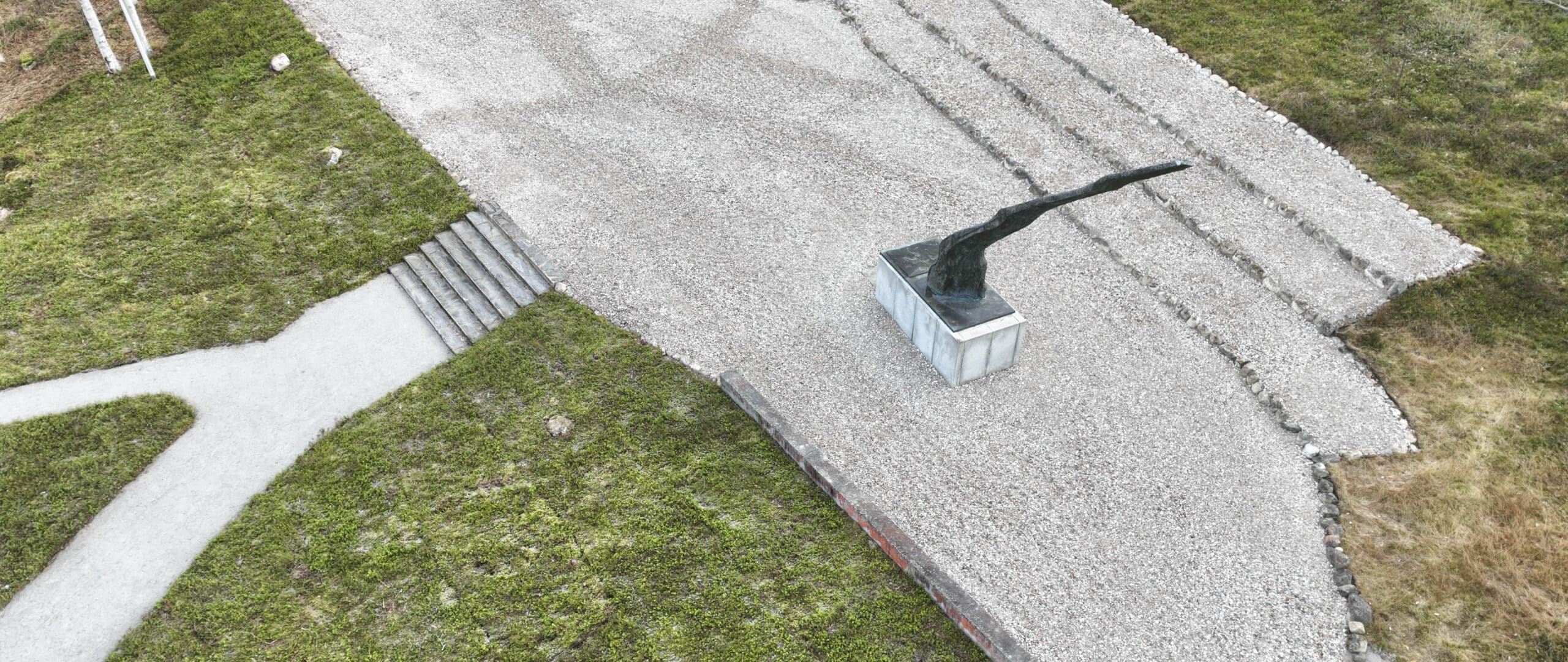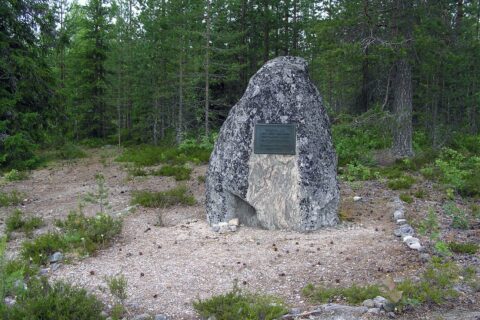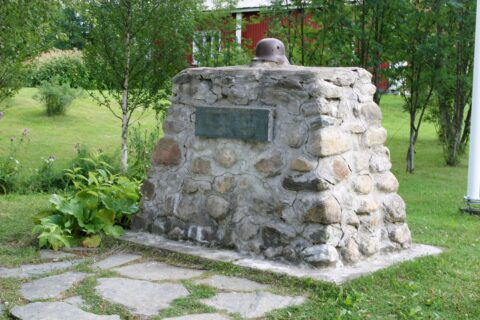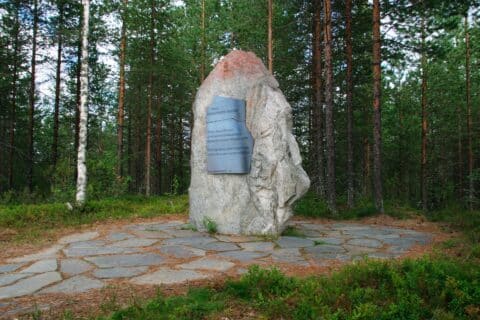The Flame – a monument to the battles of Suomussalmi
The main memorial to the battles of Suomussalmi was unveiled on the occasion of the 20th anniversary of the battles on 30 August 1959 at a great patriotic folk festival. As many as 5 000 people took part in the unveiling, almost a third of them veterans.
Everyone in Finland knows Alvar Aalto’s name and the iconic works of the world-famous designer and architect – the Finlandia House or the Aalto Vase – need little introduction. Less attention has been paid to a very rare monument in the genre of the academic Aalto: the Flame Statue.
For the designer, the work was unusual in that, apart from Suomussalmi, only Alajärvi has Aalto’s imprint on two monuments: those to the fallen and heroes of the Civil War. In some sources, the Flame Statue is erroneously cited as the only monument designed by Aalto.
In the words of the internationally renowned modernist pioneer himself, there is no real narrative in the statue’s formal language. The purpose of the nine-metre monument is to portray emotional values to the viewer in the midst of Finnish nature and, according to the chairman of the statue committee, August Mäkiniemi, it should above all convey the dramatic and tragic aspects of conflicts. The two well-known Finns, Mäkiniemi and Aalto, had an interesting crossover in their civil life, as the architect’s second wife Elissa was Mäkiniemi’s daughter.
Mäkiniemi, who was a key influence on the memorial project, was very familiar with the area. Born in the rural municipality of Kemi, Mäkiniemi was the commander of Infantry Regiment 27 and long-time head of the Pohjola Protection District, who was appointed commander of Infantry Regiment 27 during the extraordinary exercises in the autumn of 1939. Infantry Regiment 27 played a key role when the Ukrainian 44. Division was destroyed on the Raattei road. All troops operating on the Raattei road were subordinate to Mäkiniemiye at the beginning of the battle. Under his stern orders, the Hawkeye motel was held at all costs.
Mäkiniemi’s military career began in Germany in 1915 with the so-called Pfadfinder course, after which he fought in five wars. In the First World War he took part in the battles of the Misse River, the Gulf of Riga and the Aa River. In the Finnish Civil War he fought on the fronts of Tampere, Vyborg and Kämärä.
After the Winter War he was promoted to colonel. In the Continuation War, Mäkiniemi served as commander of Infantry Regiment 33 from 1941 to 1943. After the Continuation War he resigned from permanent service in 1944.The crew of JR 27 came from Peräpohjola and Lapland and was assembled in Kemi. The regiment was ordered to arrive at the front on 7 December. Colonel Siilasvuo, who had been in command of the whole division, was appointed commander of the brigade.
The statue in the middle of the square lined with Männikö is still an impressive sight just at the junction of Kuhmontie next to Karhulanvaara. The statue’s sturdy granite base features a metal plaque with the battle sites of Suomussalmi and Siilasvuo’s legendary words at the top: “Many brave warriors redeemed the great victories of Suomussalmi with their heart’s blood. They showed their people the path of glory, which was hard, but the only one”.
The monument and its surroundings have been restored in the summer of 2022 by the Suomussalmi municipality.




